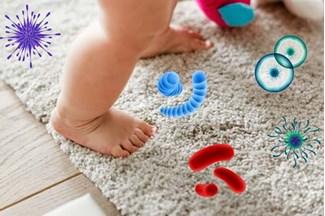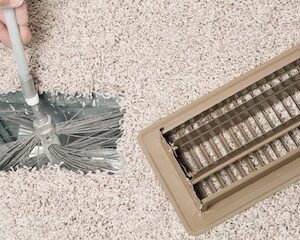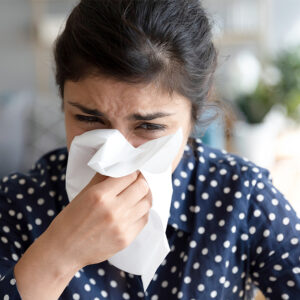DuraSan™ Sanitizing Treatment
$49.00
- DuraSan™ Sanitizing is an antibacterial, and hospital-grade deodorizer
- Reducing the number of microorganisms on surfaces to a safe level determined by public health standards
- From BioCare™ Cleaning Solutions
*Only Available when combined with a Freshen Up, Cleaner Longer, or Healthy Home Cleaning Package
Description
*Only Available when combined with a Freshen Up, Cleaner Longer, or Healthy Home Cleaning Package
Sanitizing and cleaning are two related but distinct processes when it comes to maintaining cleanliness and hygiene. Here’s an overview of the difference between sanitizing and cleaning:
Cleaning: Cleaning refers to the physical act of removing dirt, debris, and visible impurities from surfaces. It involves using water, detergents, and cleaning tools such as mops, brooms, and vacuum cleaners to eliminate dirt, dust, and stains. Cleaning helps improve the overall appearance of surfaces and reduces the presence of germs, but it may not necessarily kill all microorganisms.
Sanitizing: Sanitizing, on the other hand, involves reducing the number of microorganisms on surfaces to a safe level determined by public health standards. It aims to kill or inhibit the growth of bacteria, viruses, and other harmful microorganisms that may cause illness or contamination. Sanitizing typically involves using chemicals, such as disinfectants or sanitizing solutions, that are specifically designed to kill or reduce the presence of pathogens.
Key Differences:
- Purpose: Cleaning primarily focuses on the removal of visible dirt, debris, and stains, whereas sanitizing aims to reduce the presence of harmful microorganisms on surfaces.
- Level of Germ Reduction: Cleaning may reduce the number of germs to some extent by physically removing them from surfaces, but it may not eliminate all pathogens. Sanitizing specifically targets microorganisms to reduce their presence to a safe level.
- Methods and Products: Cleaning typically involves the use of water, detergents, and physical agitation to remove dirt and debris. Sanitizing involves the use of chemicals or disinfectants that are specifically designed to kill or reduce the presence of microorganisms.
- Standards and Regulations: Sanitizing is often regulated and guided by specific standards and regulations set by public health agencies. These standards define the required level of germ reduction for different environments, such as food preparation areas or healthcare facilities. Cleaning, on the other hand, may not have specific regulatory guidelines for germ reduction.
It’s important to note that while sanitizing is effective in reducing the number of microorganisms, it may not eliminate all types of pathogens. For certain high-risk environments or situations, such as in healthcare settings, more stringent measures like sterilization or disinfection may be necessary.
Ultimately, both cleaning and sanitizing are important components of maintaining a clean and healthy environment, and they are often performed together to achieve optimal cleanliness and hygiene.
Additional information
| Areas or Quantity | 1 Area, 10 Area, 2 Area, 3 Area, 4 Area, 5 Area, 6 Area, 7 Area, 8 Area, 9 Area |
|---|




